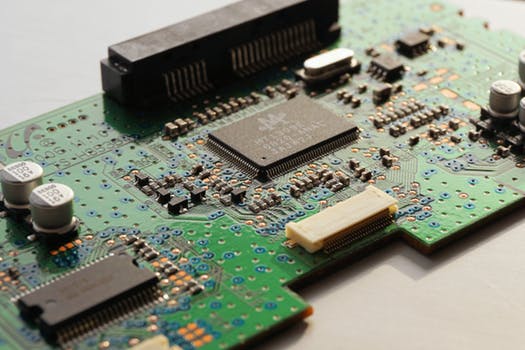Permanent Magnets
The moving-coil meter movement uses a horseshoe-shaped permanent magnet. The moving coil is placed within the magnetic field between the magnet’s two poles. However, if a simple horseshoe magnet were used, many of the magnetic lines of force would not cut through the moving coil. Magnetic lines of force travel the path of least resistance. Soft iron offers less resistance to lines of force than air. Therefore, soft iron pole pieces are attached to the poles of the magnet to concentrate the lines of force between the magnetic poles.
To further concentrate the lines of force between the magnet poles, a circular, soft-iron core is placed between the pole pieces. The core not only causes a very strong, uniform magnetic field between the poles, but it also acts as a keeper to help the permanent magnet retain its magnetism. The moving coil rotates around the soft iron core, which is fixed in place.
Moving-Iron Meters
The moving-coil and the moving-iron meter movements contain essentially the same parts except for the permanent magnet of the moving-coil movement and the iron bars of the moving-iron movement. A moving-iron meter contains two vanes mounted within a coil. One vane is fixed and the other, with a pointer attached, is free to rotate. Current through the coil induces a magnetic field of the same polarity in both vanes. The free vane, therefore, is repelled by the fixed vane. It rotates a distance that depends on the strength of the magnetic field, and, therefore, on the strength of the current. The pointer, which is attached to the free vane, also rotates and swings across a calibrated scale to indicate the amount of current flowing.
Iron Vanes
The differences between the concentric-vane and radial-vane iron meters are the shape of the vanes and the physical placement of the vanes with respect to each other. The concentric-vane meter contains two semicircular soft iron vanes. One vane is essentially inside the other, which is why the meter is called a concentric-vane meter. The outside vane, which is tapered at one edge, is fixed; the inner vane, which has square edges, is pivoted. When current flows through the coil, the lines of force cut through both vanes, but the distribution of the lines of force is not the same in one vane as in the other. The lines of force are distributed uniformly through the movable (inner) vane because its dimensions are uniform, but they are not distributed evenly in the stationary (outer) vane because of its tapered edge. Fewer lines of force pass through the tapered end than through the rest of the vane because the tapered end is smaller than the rest of the vane, and, therefore, has a higher magnetic reluctance.
When both vanes become magnetized in the same polarity, they will repel each other, causing the movable vane to rotate on its pivot. The strongest repulsion will occur in the area where the stationary vane is not tapered since there will be more magnetic lines than in the tapered area. This means that the movable vane will swing toward the tapered end of the stationary vane since there are fewer lines of force there.

References
http://electrical-engineering-portal.com/moving-iron-instruments-voltmeter-and-ammeter
https://www.electrical4u.com/moving-iron-instrument/







